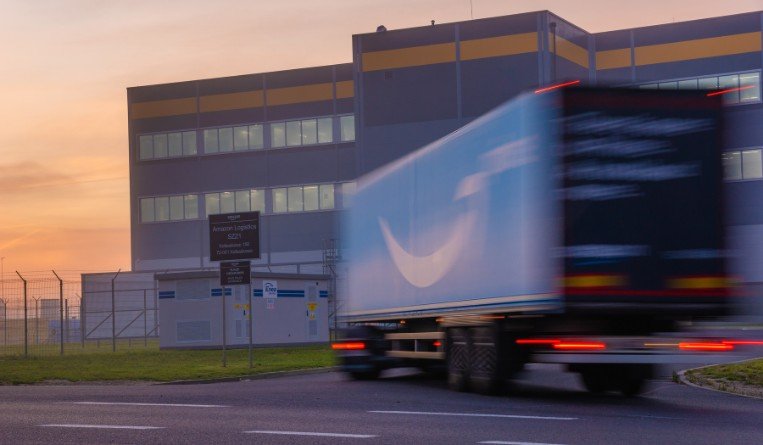Warehouse operators can look forward to continuing juicy returns as companies of all stripes scramble for space to store goods. Fuelled by supply chain shifts to elevated inventory levels and the rapid growth in ecommerce, demand is going through the roof, well in excess of available warehouse space. Even new capacity in the pipeline is largely sold out already.
Recent moves by the ports of Los Angeles and Long Beach to levy charges on long-dwelling containers on the docks in order to unclog congestion reflect claims that U.S. importers have left cargo at container terminals because they lack warehouse space to store it. By the same token, a lack of chassis has also been blamed in part on importers keeping containers on chassis around their facilities as additional storage space. Warehouses are full to the rafters – not only at the import gateways but also at rail hubs in the interior and in the urban centres.
According to logistics infrastructure development giant Prologis, markets like New York, Atlanta, Chicago and Southern California are effectively sold out in terms of available warehouse space.
Ecommerce has contributed to this development. Initially Amazon flew its freighters to smaller airports near distribution centres away from the big cities, but increasingly it has mounted flights to New York, San Francisco and Atlanta to rush goods to consumers impatiently awaiting their online purchase.
Ecommerce is gobbling up warehousing space. Amazon has led the charge, opening new distribution centres in numerous locations. Industrial real estate developer CBRE estimates that an additional 330 million sq ft of distribution space is required in the United States by 2025 to accommodate projected growth in ecommerce volumes.
For every US$1 billion of ecommerce sales, 1 million sq ft of new distribution space is necessary, according to CBRE. With global ecommerce sales to go up by US$1.5 trillion by 2025, this translates into an increase in global warehousing demand of 1.5 billion sq ft. This will likely hit China and the U.S. the most: Between them, they account for 57% of global ecommerce sales, CBRE pointed out.
On top of the required space for ecommerce volumes, there is need for further warehouse capacity from traditional retailers, manufacturers, 3PLs and other players.
Retailers’ need for storage capacity has gone up significantly. The inventory-to-sales ratio has remained stubbornly low, fuelling need for more volume to restock rapidly emptying shelves. Moreover, the supply chain shocks of the past couple of years have caused a shift in supply chain strategy among many players. They are moving away from the just-in-time concept and build up inventory to be able to cope with disruption.
“What companies are thinking about now is needing just-in-case inventory,” remarked Carol Tomé, CEO of UPS in Atlanta.
Prologis recently adjusted its projections for inventory levels. In the U.S., it now expects to see an increase of 10-15%. In April 2020, it had envisaged inventory growth of 5-10%. For the developer, this translates into a commensurate increase in the number of warehouses it has to build.
Relief is not in sight. San Francisco-based Prologis CEO Hamid Moghadam reckons that the imbalance in demand and capacity could return to a semblance of normality in the second half of 2023, but says at this point there is little capacity to absorb new demand. According to Prologis, much of the upcoming warehousing capacity that is currently in the pipeline has already been leased.
Prologis can muster US$20 billion for additional real estate development, but even that would not be enough to meet demand, Moghadam said.
Capital is not the only bottleneck. Space for new warehouses and distribution centres is limited, especially in the urban centres. Compounding matters further, there is a rising tide of opposition from resident interest groups and communities against warehouse developments and the associated movement of trucks.
Warehouse developers compete with other sectors for limited land resources for building, such as the growing life sciences and data centre segments, which tend to find more favour among municipal authorities and urban planners.
Even if the conditions for development of warehouse facilities were more favourable, the industry would still be struggling with another constraint – the shortage of labour to man those warehouses. In July, the U.S. registered 490,000 open positions in warehousing and transport, not counting warehouse jobs in the manufacturing and retail sectors.
As with space for facilities, the warehousing industry is competing with other sectors for a scant resource here. Jobs in warehouses are perceived to be more dangerous and strenuous than openings in other industries that pay comparable wages. In air cargo, there is the additional hurdle of background checks, which put new recruits in limbo for weeks, so many candidates concentrate on other sectors.
The labour shortage is fuelling the push for more automation in the warehouse. According to one recent estimate, the warehouse automation market will climb from US$29.6 billion in 2020 to US$69 billion in 2025.
This should ease the need for warehouse staff to some extent, but it will not solve the problem. As Prologis pointed out, even a highly automated warehouse needs workers.
Ian Putzger



